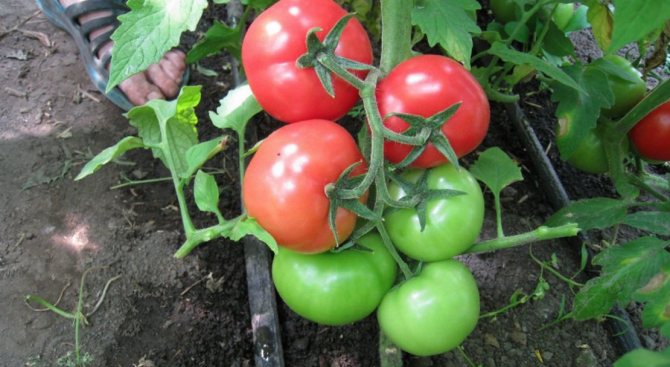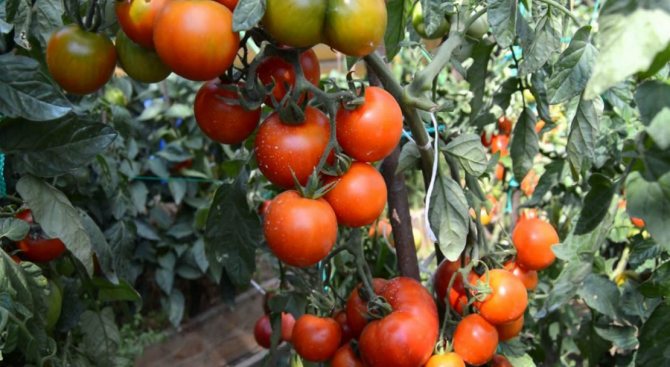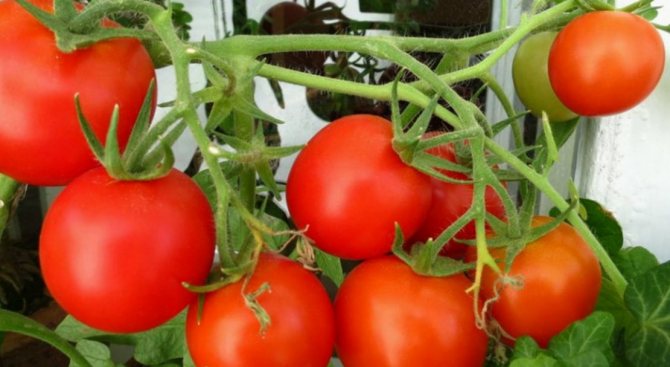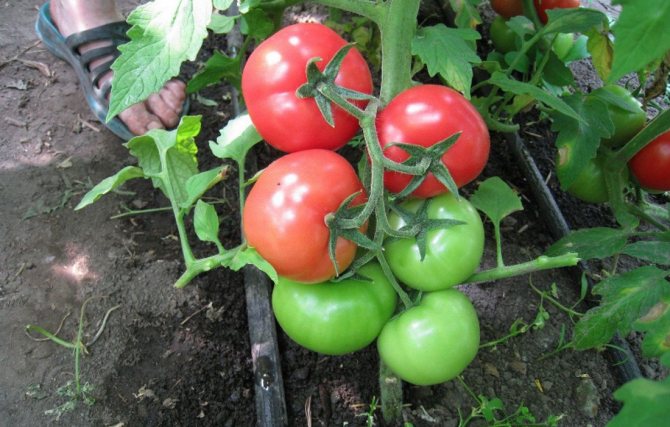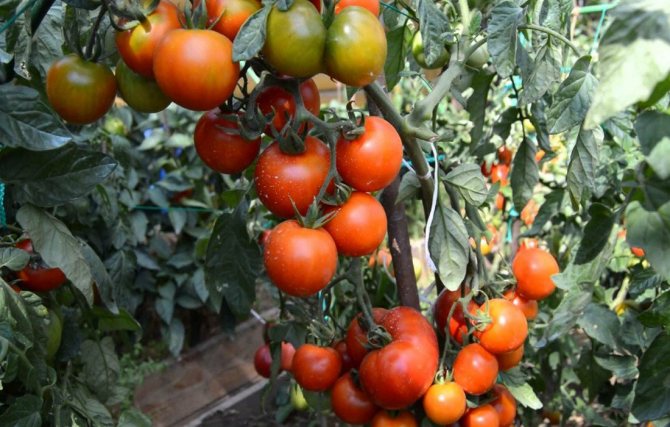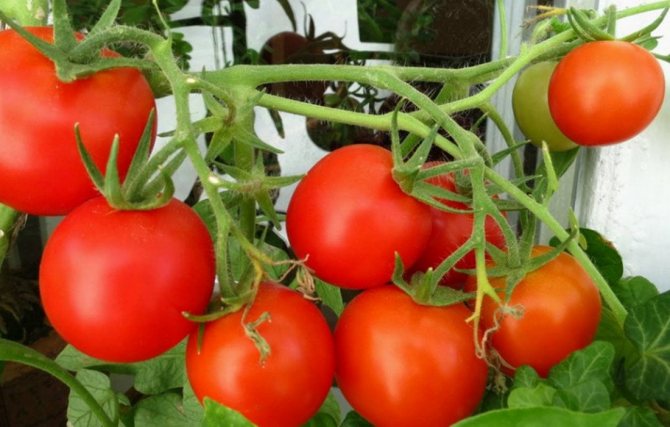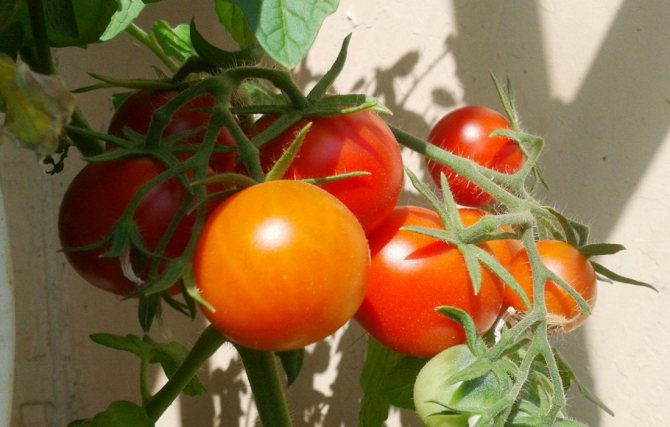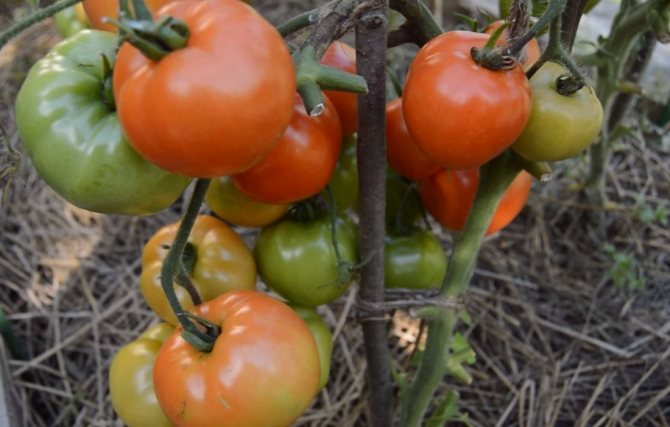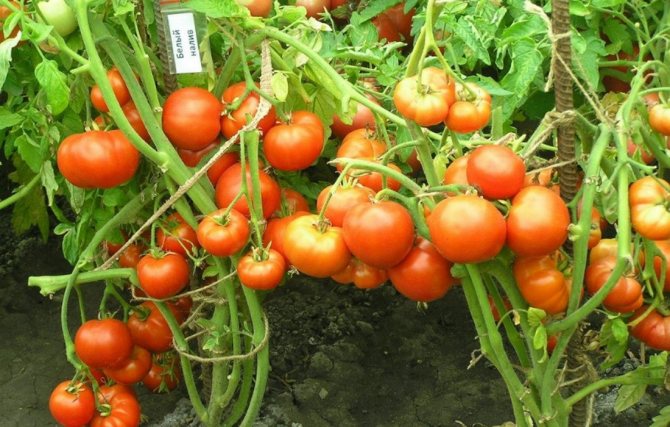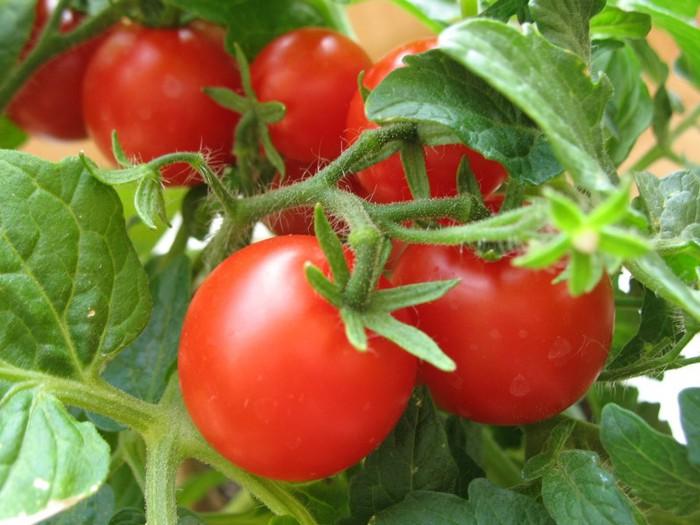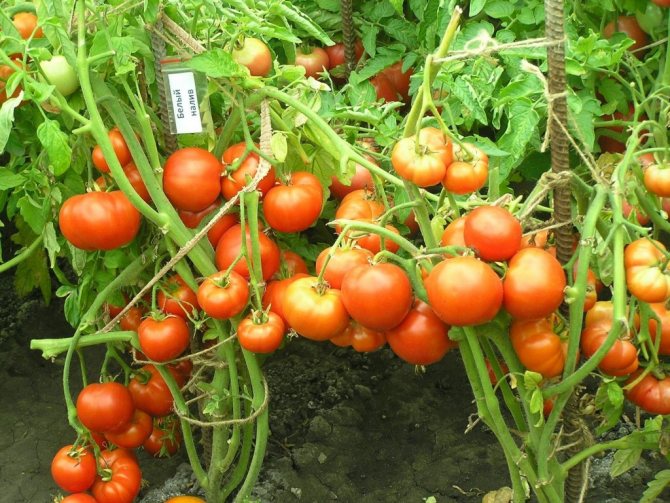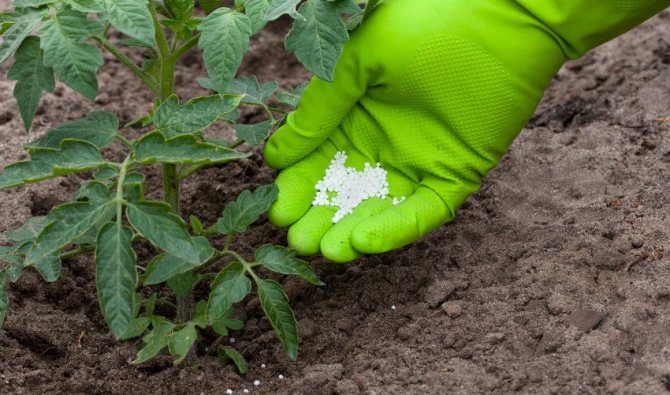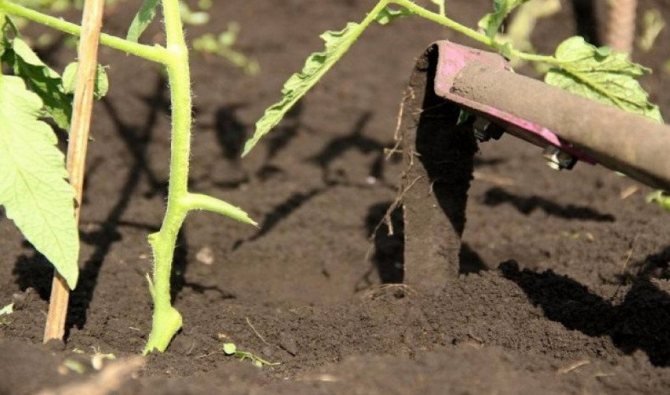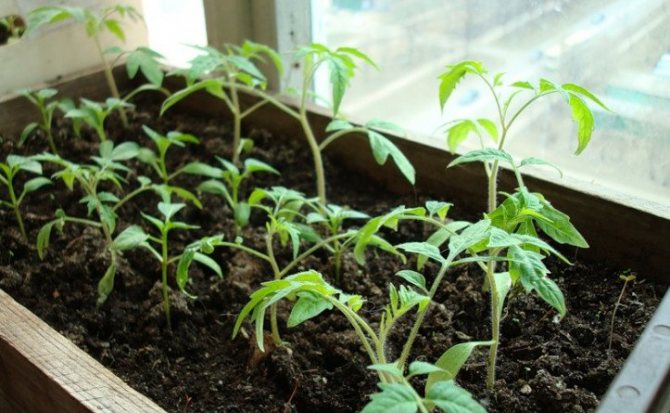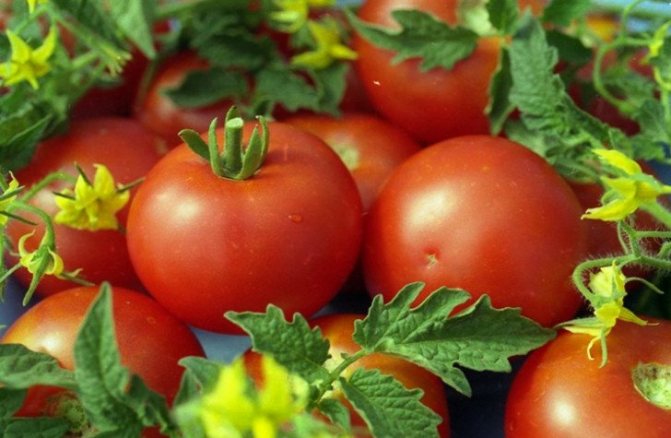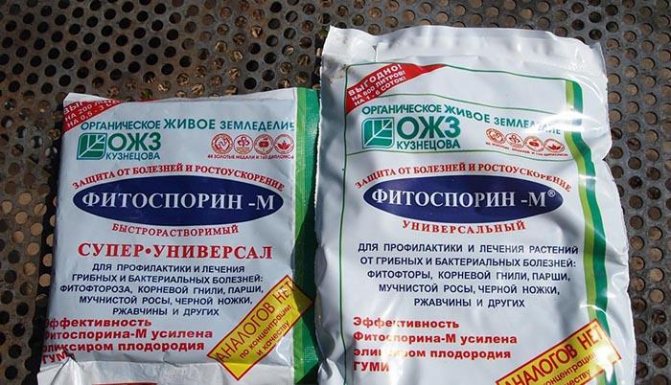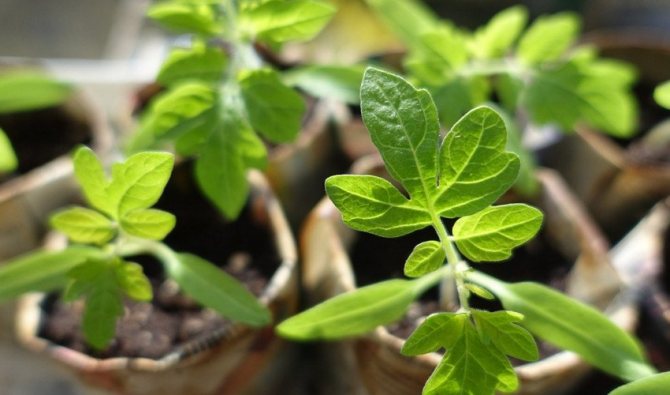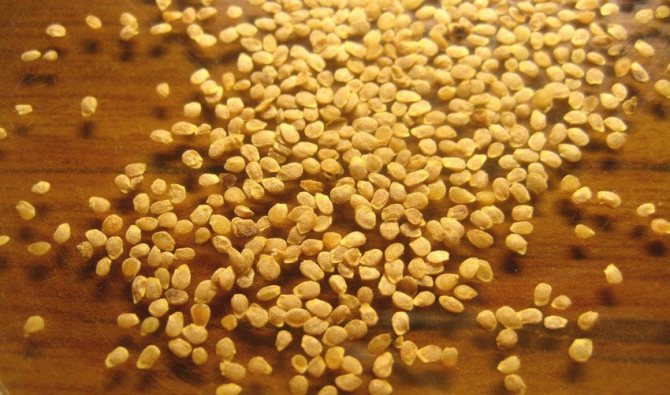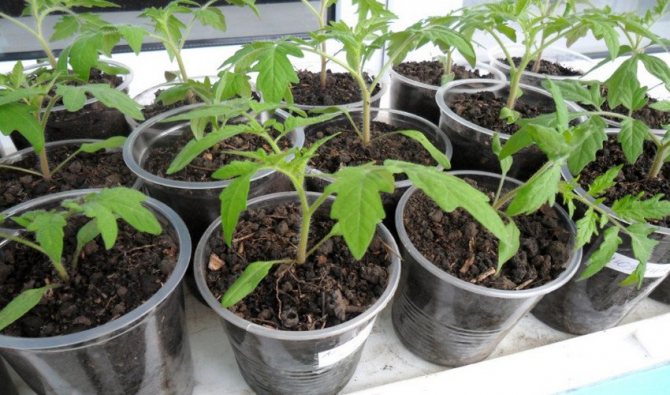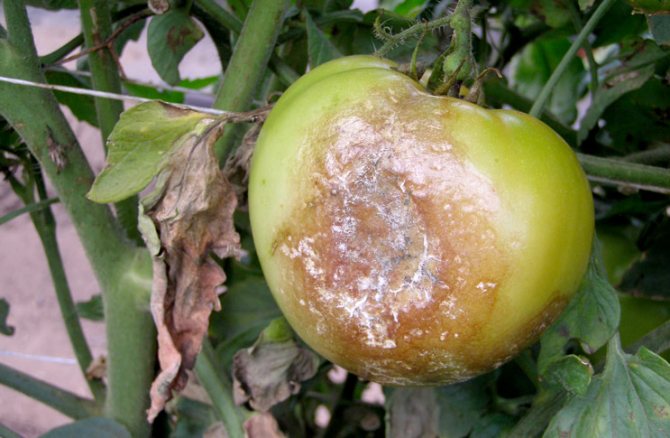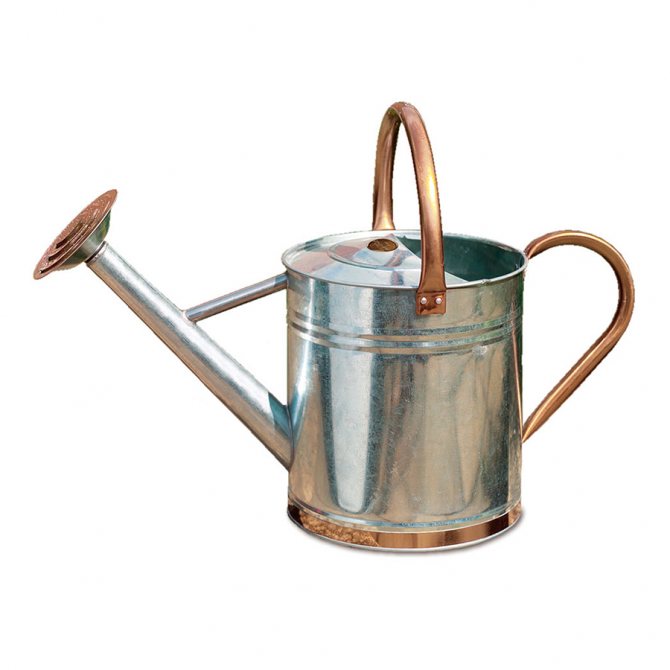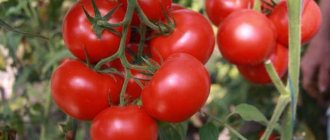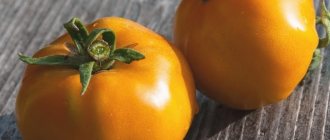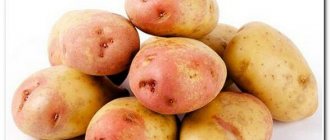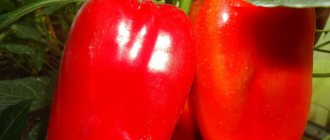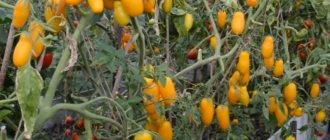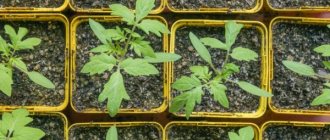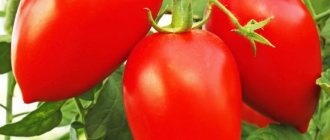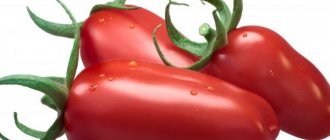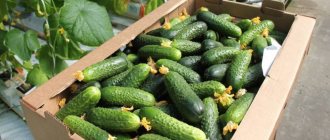Among the vegetable crops grown in private household plots and in greenhouses, tomatoes occupy a leading position. This vegetable is loved by many for its pleasant taste and beneficial properties. Cultivation success is largely determined by the correct choice of variety or hybrid. Tomato White filling, the description of the variety and the characteristics of which is known to many gardeners, has not lost its popularity for more than 50 years. Early ripe, rounded fruits of medium size delight summer residents with amicable ripening and taste. The crop is not very productive, but it has many other advantages.
Description and characteristics of the variety
Tomatoes White filling belong to the early ripening. The height of the bush reaches up to half a meter, then the growth stops. This speaks of the determinancy of the variety. Despite the limited growth, the stem and branches need to be attached to the support.
The plant has a moderate amount of medium to large green leaves. There are almost no side branches, so pinching is not practiced.
The peculiarity of the tomato is its powerful spreading roots, comparable in size to the volume of the green part of the bush. This allows you to get as much nutrients as possible from the fertile soil layer.
In addition to the listed characteristics that the White filling tomato possesses, the description of the variety includes information about the fruits, taste properties, and methods of use on the farm.
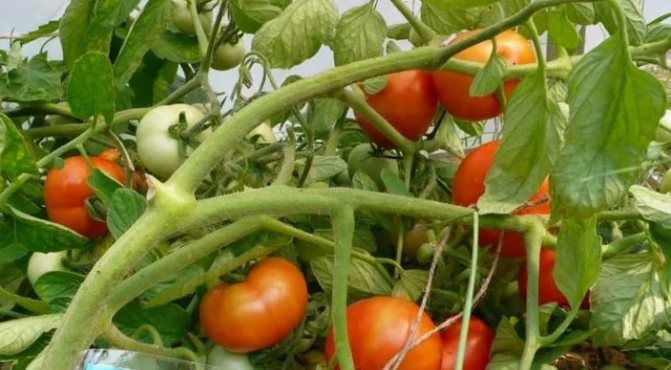
The shape of the tomatoes is round, flattened on top, there is a slight ribbing, the appearance is shown in the photo.
The color of the fruit changes as it ripens: from green it turns into yellow, and then turns bright red. Inside the same shade of pulp with a small amount of seeds. The mass of one tomato is 100-120 grams. Tomatoes are covered with a thin but tough skin that prevents cracking.
Despite the fact that the White filling tomato variety belongs to early ripening, it has high taste properties. The taste of the fruit is pleasant, sweet, a slight sourness is felt. They are used in salads, first and second courses, preservation, preparation of tomato juice.
When breeding the variety, breeders focused on high yields, however, reviews of the White filling tomato speak of average productivity. With proper care, about 3-4 kg of tomatoes per bush or 7-9 kg per square meter are obtained.
How to grow a tomato White filling
To grow a variety of tomatoes White Pouring is better in a seedling way. To keep the seedlings strong and healthy, you should follow the step-by-step recommendations.
Seedling preparation
When to plant seeds White Pouring on seedlings depends on the further place for transplanting. Seedlings intended for transplanting into a greenhouse begin to be prepared in late March or early April. For open beds, seed sowing begins in mid-April:
- At the first stage, the soil is prepared. To disinfect the soil, it is poured over with boiling water or ignited in the oven.
- They begin to select seeds. You can determine good seeds by using salt water, which is immersed in the material for 10 minutes. Hollow, damaged seeds will float to the surface, while good ones will remain at the bottom.
- Seeds suitable for planting are immersed in a solution of potassium permanganate for 20 minutes. After that, they are washed, laid out on a wet cloth and left for three days.
- Pits 7 mm deep are made in the soil, the prepared seeds are laid out and watered. After that, the container is covered with foil and removed to a warm place.
- As soon as the first shoots appear, the film is removed, and the container is rearranged on the lightest windowsill.
- After the appearance of the first three true leaves, a pick is carried out. Better to plant in separate peat cups.
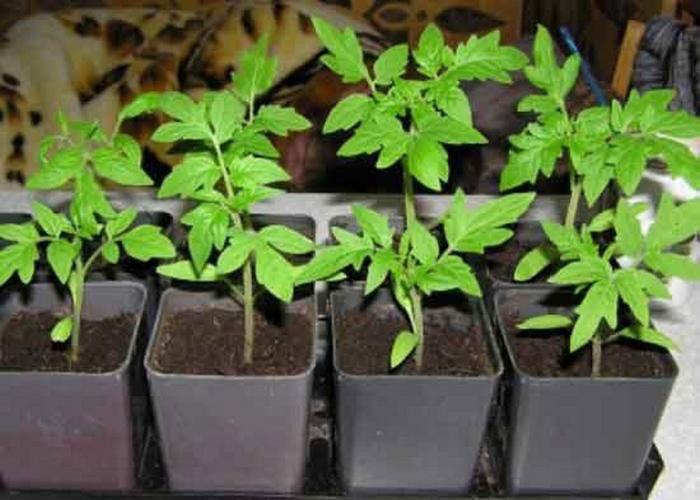

Taking care of your crop doesn't come with much of a hassle. At first, seedlings need additional highlighting. Watered three times every 8 days. It is better to pour water at the root. Fertilization begins 12 days after the pick.
The seedlings are ready for transplanting, which have reached a height of 21 cm. 12 days before planting on a permanent site, they begin the hardening procedure.
Landing in open ground
The transplantation of mature seedlings begins in late May. At this time, the likelihood of a return of night frosts decreases, and warm weather sets in. For the variety White Naliv, a loose, light soil with good aeration and neutral acidity is suitable. The ideal option is sandy or loamy composition. Since the fall, the selected area is dug up and compost is added.
Planting tomatoes White Pouring is recommended where cucumbers, cabbage, onions or zucchini grew before. You can not plant immediately after potatoes, eggplant, pepper, since the diseases of these crops are the same.
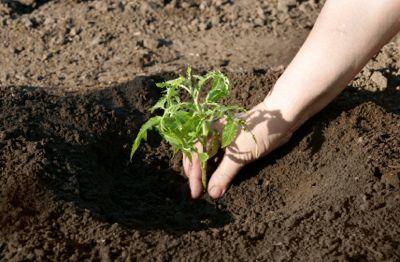

In the spring, the plot of land chosen for planting tomatoes is cleared of weeds and loosened. It is better to plant tomatoes in the beds in two rows in a checkerboard pattern, leaving a distance between the holes of 40 cm.The interval between the beds is 50 cm.
Growing in a greenhouse
Preparatory work begins in the fall. It is important to replace the top layer of the soil, since pests hibernate in it, and pathogens remain. After that, the site is dug up and fertilizers are applied.
Seedlings are planted in the greenhouse 12-14 days earlier than in open beds - in mid-May. Wells (18 cm deep) are made in a checkerboard pattern at a distance of 35 cm, into which the seedlings are transplanted.
In the greenhouse, it is imperative to monitor the temperature and humidity levels. Another condition is regular ventilation and disinfection.
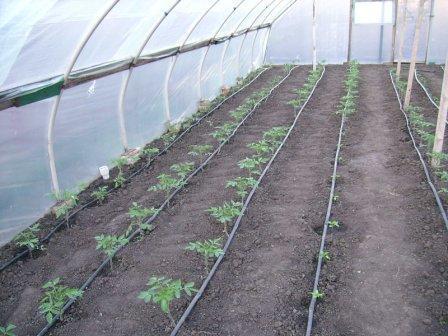

Similar varieties
Among the determinant varieties, there are several that are similar in characteristics to White filling. We present a brief description of the closest analogs:
- Agatha. A low-growing plant no more than 33 cm in height. Fruits are small, rounded, formed on clusters in the amount of five pieces. The stem is fragile, requires a garter. It is grown both on a personal farm and on a production scale. Susceptible to phytophthora.
- Siberian early ripening. The bushes are powerful, stocky, do not need a garter. Moderate pinching is recommended. The fruits are covered with a thick skin, the taste of the tomato is rich. Used in the food industry for the manufacture of tomato products. Differs in high resistance to typical pathologies of nightshade.
- Riddle. The stem is thickened, strongly branched. Stealing is not required. The brushes are small, dotted with fruits, 7 pieces each. Tomatoes are sweet and juicy, not prone to cracking. The plant tolerates sun deficiency well, it is permissible to grow in the shade. Possesses natural resistance to infectious lesions.
- Liang. The height of the bush does not cover half a meter, the branching is moderate, there is a large amount of foliage. Suitable for outdoor cultivation or greenhouse cultivation. Resistant to sudden changes in temperature, regardless of the weather, it gives a stable yield. Tomatoes are delicious, rich in carotene, B vitamins. Good resistance to various pathologies, with the exception of tobacco mosaic. During the ripening period, the fruit is attacked by pests.
- Explosion. It is characterized by undersized spreading bushes, belongs to hybrids.High seed germination is noted. They are planted both in an open area and in a greenhouse. The variety is resistant to cold weather and disease. Tomatoes are distinguished by their dense consistency and high taste. They do not deteriorate during transportation, long storage is permissible.
The listed varieties are distinguished by early ripeness, amicable ripening of tomatoes, and average yield indicators. The fruits are small, from 80 to 120 grams, outwardly similar.
Yield characteristic
Each shrub (as described at the time of breeding) is capable of producing from three to five kilograms of tomatoes. This is not the most striking indicator among the universal varieties, but at that time, such a yield was a record.
The main characteristic of the yield:
- Early ripening of fruits. From the moment of planting seedlings in open ground to harvesting, no more than a hundred days pass. In greenhouse conditions, the fruits ripen faster. The harvest is ready for harvest on the eightieth day.
- The yield of tomatoes is average. Often the yield of this hybrid is compared with the yield of later varieties. More than eight kilograms of tomatoes can be harvested from a square meter.
- All fruits ripen at the same time. This allows the gardener to immediately harvest a large crop and start processing the fruit.
Growing seedlings
Before planting, the seeds are treated with a weak solution of potassium permanganate, and the soil is calcined at high temperatures. This is done for the purpose of disinfection, destruction of harmful microorganisms.
The soil is purchased at a flower shop, prepared independently or taken from the garden plot. In the latter case, the soil is enriched with humus, potash fertilizers are applied.
The soil is placed in a clean, spacious container, moistened. Seeds are distributed with a minimum interval of 1.5-2 cm. The depth of the hole is 1 cm. Having finished planting, the container is covered with a film, placed in heat.
The first shoots are formed two weeks later, then the protection is removed, the box is rearranged to the sun.
Seedling care is simple. It is important to provide the plants with light and regular watering. Moistening occurs using a spray gun, while not only the soil is treated, but also the borings themselves. A week before transplanting to the beds, the seedlings are tempered by exposing them to the open air for 10-15 minutes.
Collection, storage and processing of crops
Harvesting begins in the early dry morning. If the crop is intended for storage, then unripe fruits are removed from the bush. You need to have time to remove all the fruits from the bush before the air temperature drops below +8 degrees.
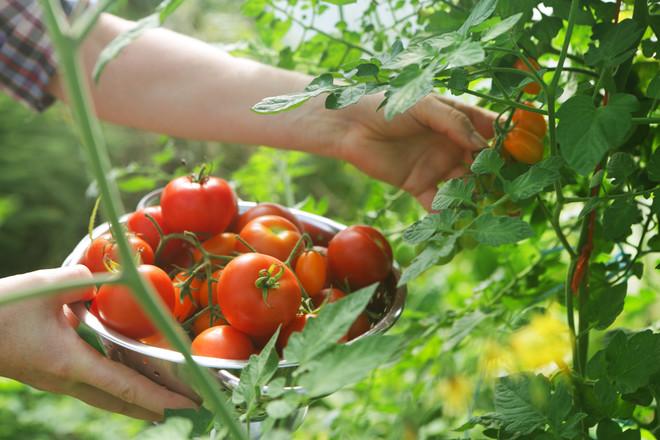

Harvested tomatoes are laid out in one layer for ripening in a cool, well-ventilated area. In this case, the air temperature should be +7 degrees, air humidity - 82%. Ripe tomatoes are stored at an air temperature of +2 degrees.
For processing, only fruits are selected that are even, without cracks and other damage. Tomatoes are used for pickling, canning, making pasta and adjika.
Planting and caring for tomatoes
The transfer of seedlings to the garden plot is carried out as soon as the height of the plant has exceeded 20 cm. Tomatoes are planted in moist, loosened soil fertilized with manure. So that the bushes do not interfere with each other, do not suffer from a lack of moisture and nutrients, it is recommended to plant no more than 3-4 plants per sq. The optimal plot size for one bush is 40 * 50 cm.
When landing in an open area, you should take into account the weather conditions. The air temperature must be stable, otherwise young bushes may suffer from periodic frosts. If, after planting, the cold nevertheless came, the tomatoes are temporarily covered with a film.


In order for the crop to ripen as soon as possible, summer residents are advised to remove the lower stepchildren up to the first fruiting brush.
White filling needs the following care:
- Moderate watering is required.Since tomatoes are located in an open area, they do not moisturize in rainy weather. In the dry season, watering is carried out at the root every four days, spending two liters of settled water for each plant.
- After watering, the soil is loosened.
- It is possible to grow a decent harvest only with the timely introduction of the necessary fertilizing. First, nitrogen fertilizers are used, such as ammonium nitrate. Further feeding is done with phosphorus and potash mixtures. 3-4 feeding is required per season.
Care
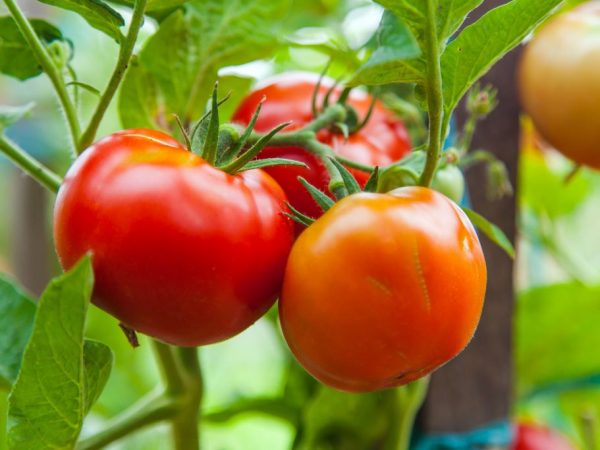

Plants need to be fertilized regularly
White filling is not picky about leaving - it does not need to be tied up and shaped. The bushes naturally form into 2-3 stems.
To avoid shading, it is advisable to cut the lower leaves from the bush, but not more than 3 pieces. at a time. Plants should be watered every 10 days, or once a week in hot weather. Top dressing is carried out every two weeks using mineral fertilizers and organic matter.
When growing tomatoes in a greenhouse, frequent ventilation is required (to maintain normal humidity levels). The soil in the beds is loosened regularly, usually after watering.
To reduce moisture evaporation, it can be mulched with peat, hay, dry leaves or grass. As weeds appear, the beds are weeded.
Diseases and pests of the hybrid
White filling is good against many diseases that are present in other fruit crops. In particular, it never suffers from dry spotting. But late blight is rarely avoided, even early ripeness does not guarantee getting rid of this pathology. The fungicide Fitosporin is used as a prophylactic agent. Treatment with the drug is carried out according to the instructions.
With excessive watering, a disease such as a black leg is possible.
Of the harmful insects, the variety infects the Colorado potato beetle. You can protect bushes from the parasite with wood ash or copper sulfate. To scare off other annoying insects, a flower bed of marigolds or nasturtiums is planted next to the garden bed.
Transplanting tomato seedlings to a permanent place
When the tomatoes grow at least 20 cm in height and are strong enough, it's time to put them in a permanent place.
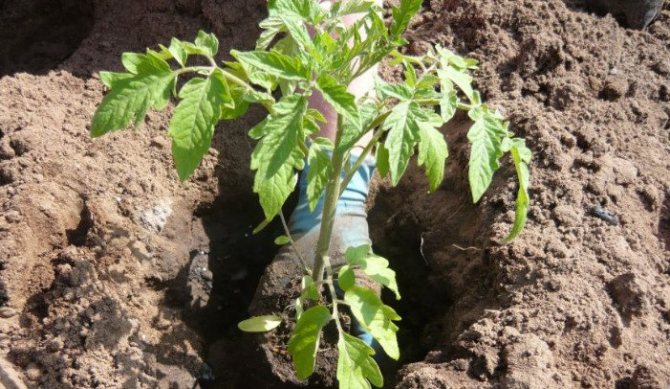

Optimal dates for disembarkation
The timing of disembarkation depends on the characteristics of the local climate and the likelihood of night frosts. Usually this is the last decade of May - the first half of June. They are planted in greenhouses ten days earlier. If planting is carried out in May, then you can plant it in stages so that in case of frost the entire crop does not die.
Important! Even if the seedlings have been hardened, this will not guarantee that they will survive freezing. If the plantation has already been planted, and forecasters promise frosts, you can spread or stick tree branches around the bushes, which will take the "brunt".
Choosing a site for planting: lighting and soil
Tomatoes prefer slightly acidic, light and moderately nutritious soil. As a rule, these are loamy or sandy soils. The land is prepared in the fall, applying fertilizers or compost, and with increased acidity - lime. The more sun the tomatoes receive, the less they are susceptible to fungal diseases and the better they ripen. Therefore, the landing is carried out on the southern or southeastern side of the site.
Good and bad predecessors
It is better to give the tomatoes the area where cucumbers, onions, cabbage or zucchini used to grow. After crops such as potatoes, bell peppers and eggplants, tomatoes can be grown no earlier than three years later, since these plants are susceptible to the same diseases.
Optimal scheme for planting seedlings
Planting tomatoes do not like crowding, so the bushes need to be placed in checkerboard not closer than 50 cm from each other and leave the same amount between the rows. If you save space and place them too close, this will negatively affect the ripening of the fruits, and in case of illness, the plants will become infected faster.
Advantages and disadvantages of the variety
If we consider the whole tomato White filling, the characteristics and description of the variety, we can highlight both the pros and cons of the culture. Tomato advantages:
- early fruiting;
- the bush does not need shaping and pinching;
- acceptable productivity;
- tolerates adverse weather conditions;
- beautiful delicious tomatoes;
- grown in an open area;
- widespread use in cooking.
The advantages of White filling are significant, but the description of the variety also includes disadvantages:
- the risk of late blight;
- specific sourness in taste, lack of sweetness;
- average yield.
Main advantages
Despite the early yield, the fruits of tomatoes are well preserved in cool rooms, basements. They are solid, which allows them to be transported over long distances. At the same time, sellers are not afraid of damage to the cargo.
Another advantage is considered to be resistance to skin cracking. Even with frequent and abundant watering (prolonged rain), the tomatoes remain intact and look great. You can store them for several weeks, but you should make sure that they are at a distance from each other, deployed with the stalk towards the ground or a box.
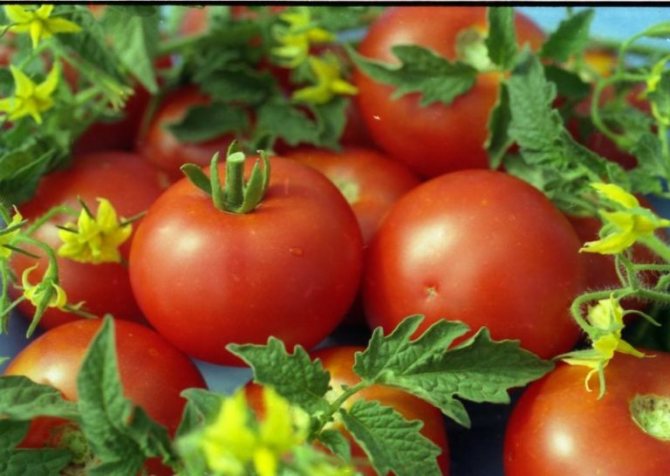

Most of the crop ripens almost simultaneously, so gardeners can harvest and distribute the product quickly. Then the fruits ripen gradually after a few days.
One bush can have 5-6 branches with tomatoes. You can pick the fruits individually or in whole branches, if they ripen at the same time.

